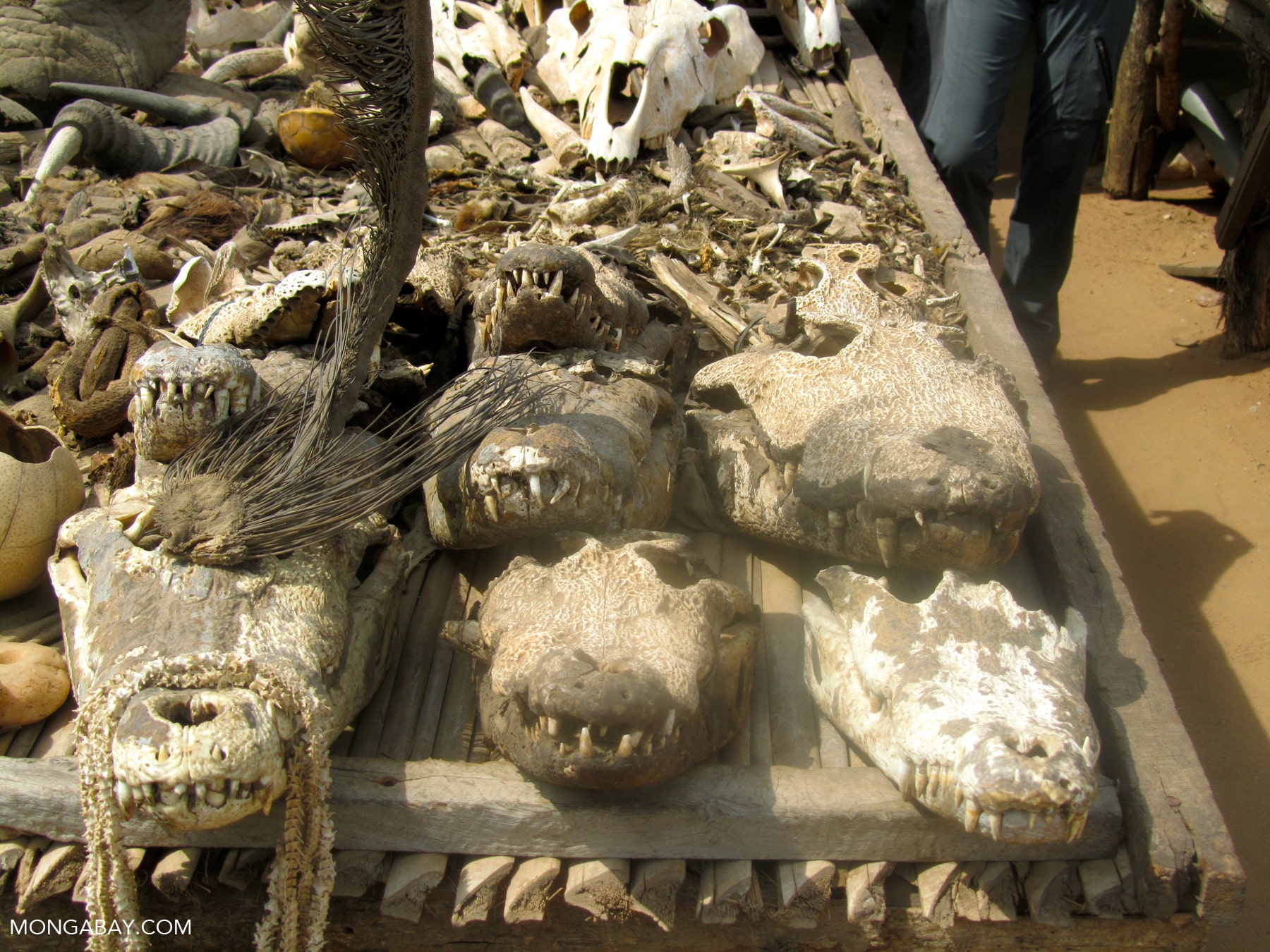
Crocodile snouts at a wildlife products market in Togo. Photo courtesy of Mongabay.
Background
The rapid evolution of illegal wildlife trafficking is devastating species around the world. Poachers and traffickers supply organized criminal enterprises to meet consumer demand for wildlife commodities and live animals in what is estimated to be a multi-billion-dollar annual trade.
The unsustainable trade is adding to unprecedented declines in some of the world’s most recognizable species, as well as lesser-known species that are vital to the functioning of successful ecosystems.
In response, Mongabay has launched a reporting project on the illegal wildlife trade. Under this project, Mongabay will publish news, investigative reports and videos exploring the scale, extent, and impact of wildlife trafficking to document gaps and opportunities in current attempts to combat the illegal wildlife trade.
Stories published through this project can be reviewed here
Suggested story topics and guidelines
We welcome proposals from experienced journalists for conventional news stories, in-depth features, investigative reports, case studies and short video packages of up to 10 minutes in length that highlight topics of interest including, but not limited to:
- Shifts in consumer behavior and how they are affecting the illegal wildlife trade, e.g. changing demand for jewelry, exotic pets, medicinal products, clothing and other luxury goods.
- Successes and failures of wildlife trade monitoring and law enforcement.
- The online trade of wildlife.
- Organized crime and corruption linked to the wildlife trade.
- Economic impacts of the trade, including how wildlife trafficking can fuel conflict and prop up the activities of armed groups.
- The link between wildlife trafficking and the spread of disease.
- The impacts of wildlife trafficking on biodiversity.
- Transnational wildlife trafficking, particularly in Africa and Asia.
Opinion and comment pieces will not be considered for this project and are not paid opportunities. Please share commentary pitches using this form and refer to submission guidelines here.
Each story will be between 800 and 2,000 words in length and will include quotes from at least three original interviews. Higher word counts may be negotiated for investigative pitches and features on a case-by-case basis. Authors will be expected to provide several publishable photos for Mongabay’s use to accompany their articles, along with captions and photo credits. Additionally, authors should provide links to supporting documentation cited in their story.
Mongabay will negotiate all fees and contracts on a per-story basis. Completed stories will be paid on a per word or fixed fee basis, with rates depending primarily on the journalist’s experience and the potential of the proposal. Mongabay.com publishes under an open Creative Commons license that allows for sharing, translation, and re-posting. More information on Mongabay’s editorial standards and practice can be found here.
How to submit your pitch
If this is your first time submitting a pitch to Mongabay, please be prepared to share your resume/portfolio along with three samples of your work. The story pitch should be up to 500 words in length and include a suggested title for the project. Strong pitches will clearly explain the specific subject you would like to write about in detail, your approach to covering it, and highlight a few potential sources. If you are proposing a story that is led by video, please indicate that and include a short description of your video idea. Pitches for video-led stories should also include an expected shot list and interviews.
Please review the complete guidelines on what to include in your pitch here: https://mongabay.org/programs/news/opportunities/
Please use one of the following forms so that the information is directed to the most appropriate editors:
- Pitch a story to the Africa team in English or French
- Pitch a story to the Southeast Asia team in English